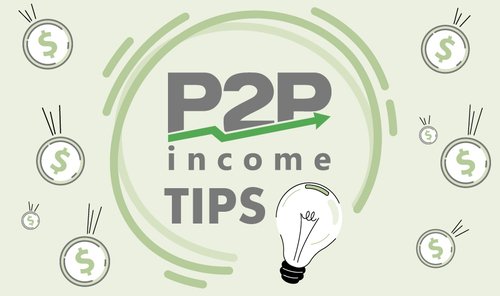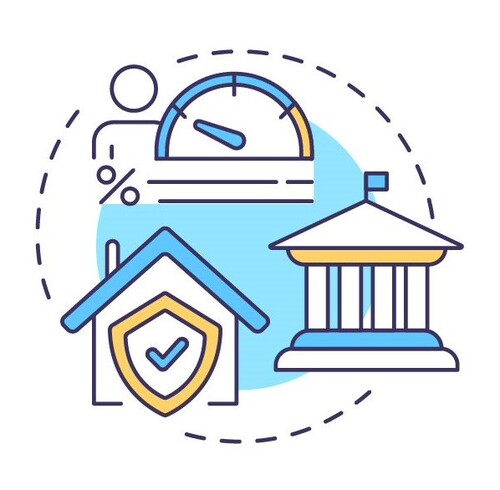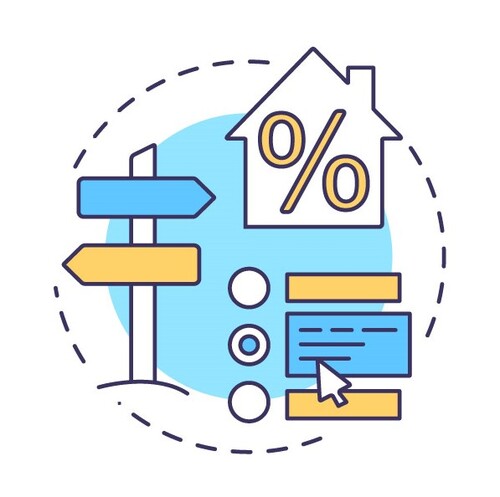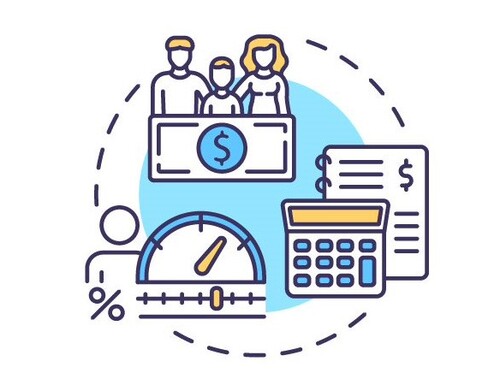P2PIncome | Five Tips to Invest in Peer-to-Peer Lending
We all know lending money is a tale as old as time. However, peer-to-peer lending is not quite as simple as just lending money. For that matter, peer-to-peer lending does not mean the same thing to every lending platform or every P2P investor.
Since its inception, peer-to-peer lending, has become more of an umbrella term. Due to the establishment of companies like Prosper, there have been countless variations of fintech companies using microfinance to establish a profitable business model. These variations of microfinance models that have emerged have reshaped and redefined what it means to be a peer-to-peer lending investment service.

Through the use of various perks and features, different platforms are able to provide investment services that vary greatly in terms of security, profitability and ease of use.
This investment guide will highlight the top five things to look for amid the sea of P2P lending platforms. It is of the utmost importance you select a platform with a business model you understand and which has the basic functions of any peer-to-peer lending platform. With the exception of Tip 5 (below) the following tips in this guide address added perks and things to look for that will make your P2P investment experience exponentially more enjoyable.
Tip 1: Collateral
Collateral implies that the borrower in a given loan contract put something up in order to receive the loan. You will find that in most peer-to-peer lending platforms that only deal with consumer loans, that there will be very little collateral provided by the borrowers. However, when dealing with real estate loans, mortgage loans, development loans and business loans, very often there will be enough collateral posted up.
The collateral is your insurance. When there is collateral it becomes less of a risk for the borrower to default. The collateral is the borrowers incentive for paying you, the investor, back. Collateral can be anything. It can be a house, a car, an office space or even royalties. Anything that has a value that can be determined can be used as collateral to be traded in for a loan.
Tip 2: Buyback Guarantees

Buyback guarantees are first and foremost, a promise upheld by an entity, or company. It's usually the peer-to-peer lending platform or it's partnered loan originator. Buyback guarantees imply that if a borrower defaults on their loan, then the entity in question, will have to buy back the loan and reimburse principal, plus interest. Buyback guarantees have in large part popularized peer-to-peer lending by providing a safety net for investors. Many experts have claimed that buyback guarantees are sort of an illusion and will have a large kick back on the industry.
While there are certainly poor ways to implement buyback guarantees, there are also very clever ways. Some of the top performing platforms in today's market are using their buyback guarantees very effectively. And the safer and more secure a marketplace feels, the more investments thrive.
Tip 3: Secondary Markets

In every peer-to-peer lending platform there is at least one marketplace, and we refer to this as the primary marketplace. In many peer-to-peer lending platforms there exists a secondary market. The secondary market is there mainly for the purposes of issuing added liquidity to the platform. Some investors also like using the secondary market to include it in their investment strategies.
For example, on the secondary market you can purchase loans at marked up and marked down cost. Some investors go there to purchase loans they believe are of good value for a low price. Or rather, they may look at the primary marketplace to find loans they think are of good value so that they may sell them in the secondary market for a marked up price. Both strategies are reasonable strategies and are more or less encouraged in the industry as they add liquidity to the marketplace at no risk to the buyers or sellers.
Tip 4: Track Records

When you're picking the right platform for you, whether it's PeerBerry, Mintos or October you want to ensure that the platforms are already tried and true. Look out for their default rates, how many loans they have funded, and how many times they have gone into fund recoveries for their defaulted loans. And find out how many investors there are, and what is the average portfolio size of these investors on these platforms.
There are many metrics that you can find out to discern the quality platforms from the bad ones. You should also look for these platforms on social media accounts, like: Twitter, Telegram, Facebook, LinkedIn and so on. Almost every platform out there will have some form of presence on a number of social media platforms. If they do not, that's a very discouraging sign. And read reviews like we provide you on P2PIncome.com, along with other P2P review sites. Many of which are likely biased, but if you're able to read an aggregate of reviews, then you will be closer to picking the right platform for you.
Tip 5: Identify Risks/ Rewards

As an investor, you need to ask yourself, what is your risk appetite? What are you willing to lose in order to gain? Are you a conservative investor? Do you like taking big risks? These are questions that you need to ask yourself. If you are looking for very high returns, your investments might not look so different from a casino.
If you want to invest in something steady that will yield healthy returns then consider picking peer-to-peer lending platforms with reasonable rates of return that range between 6 - 10 percent. Generally speaking, the platforms that offer more than 10 percent are very high risk. And the platforms that offer lower than 6 percent might not be the kinds of returns you are looking for. At the end of the day, investors won't use these platforms if they do not make money. There is an incentive on everyone's part to ensure that these systems work in the favor of everyone.
TLDR:
- Collateral makes sure the loan you opted for is backed by a real valuable product that can be sold off to protect your principal.
- Buyback guarantees are a great way to ensure to establish the first line of defense against a defaulted borrower.
- Secondary markets exist to provide very much needed liquidity to peer-to-peer lending platforms.
- Always vet the platforms you use to ensure they have reputable and profitable track records.
- There is always an inverse relationship between risks and rewards, so make sure you understand what kind of risk you are taking for the reward you are getting.
